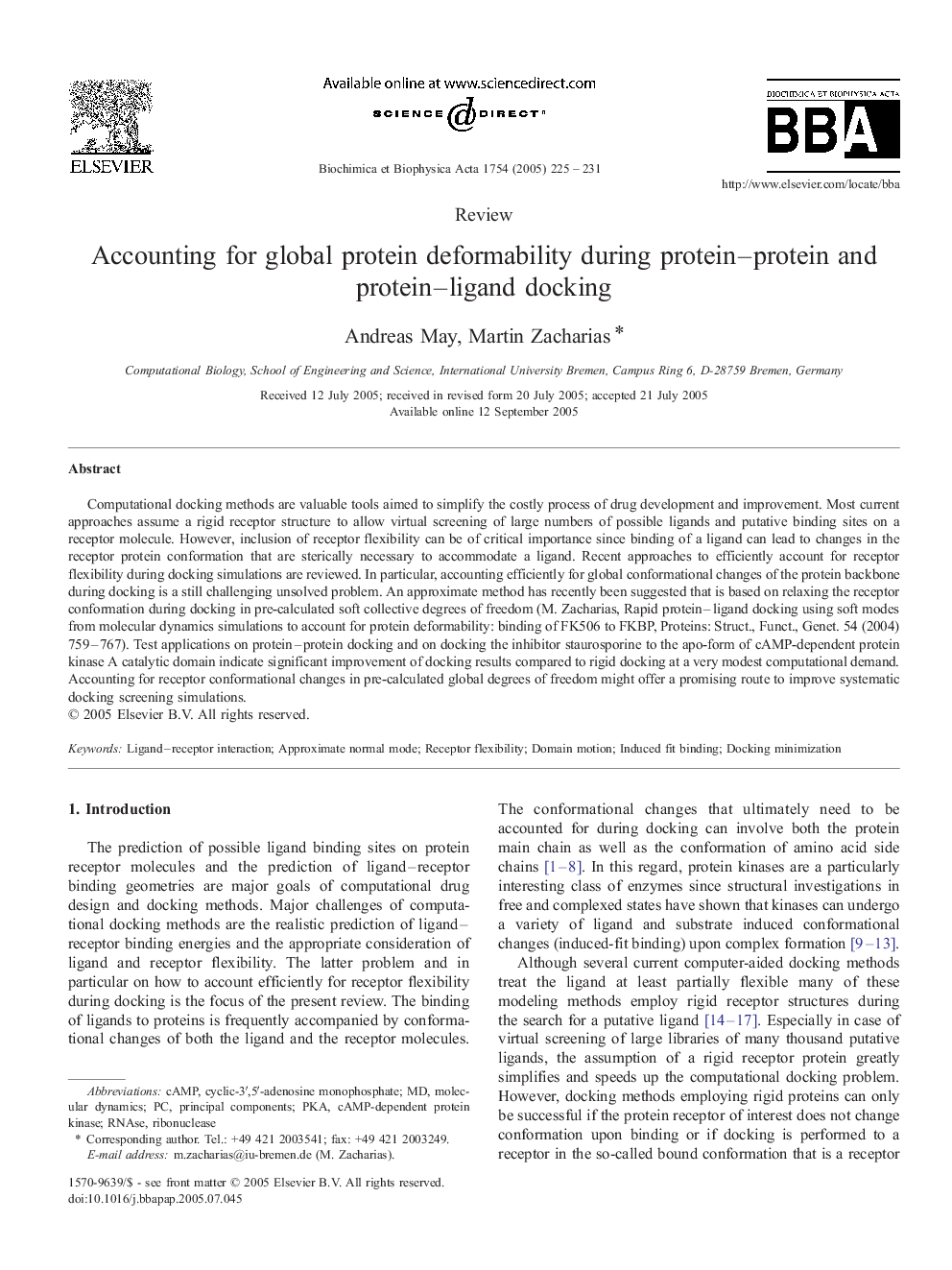| Article ID | Journal | Published Year | Pages | File Type |
|---|---|---|---|---|
| 9745089 | Biochimica et Biophysica Acta (BBA) - Proteins and Proteomics | 2005 | 7 Pages |
Abstract
Computational docking methods are valuable tools aimed to simplify the costly process of drug development and improvement. Most current approaches assume a rigid receptor structure to allow virtual screening of large numbers of possible ligands and putative binding sites on a receptor molecule. However, inclusion of receptor flexibility can be of critical importance since binding of a ligand can lead to changes in the receptor protein conformation that are sterically necessary to accommodate a ligand. Recent approaches to efficiently account for receptor flexibility during docking simulations are reviewed. In particular, accounting efficiently for global conformational changes of the protein backbone during docking is a still challenging unsolved problem. An approximate method has recently been suggested that is based on relaxing the receptor conformation during docking in pre-calculated soft collective degrees of freedom (M. Zacharias, Rapid protein-ligand docking using soft modes from molecular dynamics simulations to account for protein deformability: binding of FK506 to FKBP, Proteins: Struct., Funct., Genet. 54 (2004) 759-767). Test applications on protein-protein docking and on docking the inhibitor staurosporine to the apo-form of cAMP-dependent protein kinase A catalytic domain indicate significant improvement of docking results compared to rigid docking at a very modest computational demand. Accounting for receptor conformational changes in pre-calculated global degrees of freedom might offer a promising route to improve systematic docking screening simulations.
Keywords
Related Topics
Physical Sciences and Engineering
Chemistry
Analytical Chemistry
Authors
Andreas May, Martin Zacharias,
